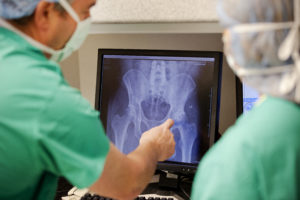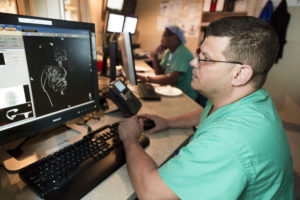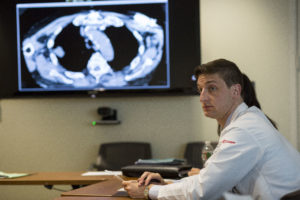 When people think of radiology, they most often think about X-rays and diagnosing broken bones. But the discipline of radiology is actually so much more and plays a substantial role in patient care.
When people think of radiology, they most often think about X-rays and diagnosing broken bones. But the discipline of radiology is actually so much more and plays a substantial role in patient care.
Beyond standard X-rays, radiology departments offer many other modalities to help diagnose and treat a wide range of conditions. These include mammography, magnetic resonance imaging (MRI), ultrasound (US), nuclear medicine testing, computed tomography (CT Scan), and interventional radiology (IR). All of these tools can be used to properly diagnose a wide range of conditions or in the treatment of a specific disease. If a doctor suspects a certain illness, these tools can be used to confirm or rule out a particular diagnosis. They can also detect certain conditions early, even before symptoms appear, when treatment may be more successful.
 For example, physicians rely on high resolution and 3D ultrasound to help in the diagnosis of prenatal conditions before the baby is born. Positron Emission Tomography (PET/CT scan) aides with detection of cancerous cells within the body. A baseline PET/CT is ordered with continuous follow up scans. PET/CT scans are used to monitor treatment options and help with appropriate plan of care.
For example, physicians rely on high resolution and 3D ultrasound to help in the diagnosis of prenatal conditions before the baby is born. Positron Emission Tomography (PET/CT scan) aides with detection of cancerous cells within the body. A baseline PET/CT is ordered with continuous follow up scans. PET/CT scans are used to monitor treatment options and help with appropriate plan of care.
It’s always important that the appropriate imaging study is ordered to assure the best diagnosis for the referring physicians. Each modality has its own strengths and caveats. Sometimes multiple modalities are used to create a better overall picture of the situation.
Team work is important in radiology. Members of the radiology team include technologists, tech aids, registered nurses, radiology residents, radiology attendings, and interventional radiologists. Interventional radiologists perform procedures with imaging assistance. After the radiologic technologist performs the prescribed tests, the radiologist interprets the exam and generates a report of the findings to the  referring physician. Radiologists often work behind the scenes, but they are a great resource in health care.
referring physician. Radiologists often work behind the scenes, but they are a great resource in health care.
The American College of Radiology (ACR) grants accreditation to facilities that prove substantial care. ACR is recognized as the gold standard in medical imaging. When you see the ACR accreditation seal, as a patient and consumer, you can be confident that you are receiving safe and quality care.
Many people feel anxious when their physician orders one or more of these tests. But know they are an important part of complete health care. Be sure to discuss any concerns with your doctor before undergoing any tests to be sure you thoroughly understand the importance.
Sara Hoch, RDMS, RVT is an Ultrasound Technologist at Cooper University Health Care. To learn more about Radiology Services, click here.
